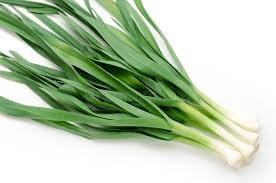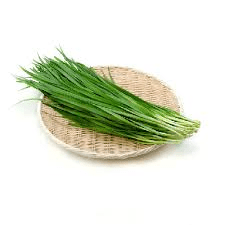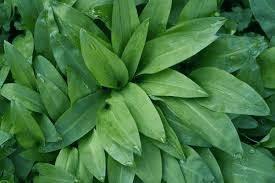Garlic (Allium sativum) is a species in the onion genus, Allium. While garlic is renowned for its pungent bulbs and flavorful cloves, its leaves also play a significant role in the growth and development of the plant. Understanding the scientific description of garlic leaves provides insights into their structure, functions, and importance in the overall physiology of the garlic plant.
The garlic leaves emerge from the basal plate at the base of the bulb and grow upward in a rosette arrangement. Each leaf consists of a long, narrow blade and a sheath that surrounds the stem. The blade of the leaf is typically flat and lanceolate, tapering to a point at the tip.
Along the margins of the blade are parallel veins that provide structural support and transport nutrients and water throughout the leaf. The color of garlic leaves varies depending on factors such as age, growing conditions, and cultivar, ranging from vibrant green to bluish-green.
The primary function of garlic leaves is photosynthesis, the process by which plants convert light energy into chemical energy to fuel growth and development. Chlorophyll, the green pigment found in chloroplasts within the cells of garlic leaves, absorbs light energy from the sun and facilitates the synthesis of carbohydrates from carbon dioxide and water.
These carbohydrates, primarily in the form of glucose, serve as the primary source of energy for the plant and are used for growth, reproduction, and metabolic processes.
In addition to photosynthesis, garlic leaves also play a role in transpiration, the process by which plants lose water vapor through small pores called stomata.
Stomata are typically found on the underside of garlic leaves and open and close in response to environmental conditions such as light intensity, humidity, and temperature. This regulation of stomatal aperture helps the plant conserve water during periods of drought and prevent excess water loss.
Garlic leaves also serve as a protective barrier against environmental stressors such as pests, pathogens, and herbivores. The waxy cuticle covering the surface of garlic leaves helps reduce water loss and protect against dehydration, while secondary metabolites such as sulfur-containing compounds contribute to the plant’s defense against herbivory and microbial attack.
In agricultural settings, garlic leaves are an important indicator of plant health and vigor. Healthy, vibrant leaves are indicative of optimal growing conditions and nutrient availability, while yellowing or wilting leaves may signal nutrient deficiencies, pest infestations, or disease. Monitoring the condition of garlic leaves is essential for maintaining crop productivity and quality throughout the growing season.
In conclusion, garlic leaves are a vital component of the garlic plant’s anatomy, serving essential functions in photosynthesis, transpiration, and defense.
Their structure and physiology contribute to the overall health and productivity of the plant, impacting garlic yields and quality in agricultural production. By understanding the scientific description of garlic leaves, growers can implement effective management practices to optimize crop production and ensure the success of garlic cultivation.
The Economic Importance and Uses of Garlic Leaves

Garlic leaves hold significant economic importance and have diverse applications across various industries. Here are 18 key economic aspects and uses of garlic leaves:
1. Culinary Use: Fresh garlic leaves, also known as garlic greens or scapes, are harvested and used as a flavorful ingredient in various culinary dishes, including salads, soups, stir-fries, and pesto sauces.
2. Medicinal Purposes: Extracts from garlic leaves are utilized in traditional herbal medicine for their potential health benefits, including antimicrobial, anti-inflammatory, and antioxidant properties.
3. Agricultural Production: Garlic leaves serve as an indicator of plant health and vitality in agricultural production, influencing yield and quality. Healthy, vibrant leaves are crucial for optimal bulb development.
4. Herbal Teas: Dried garlic leaves can be used to make herbal teas, which are believed to have various health benefits, including immune-boosting and detoxifying properties.
5. Soil Conditioning: Composted garlic leaves can be used as organic soil amendments to improve soil fertility, structure, and microbial activity in agriculture and horticulture.
6. Livestock Feed: Residues from garlic leaves can be utilized as feed supplements for livestock, providing a source of fiber and essential nutrients.
7. Pest Control: Compounds derived from garlic leaves are used in organic pest control products to repel insects and deter pest infestations in gardens and agricultural crops.
8. Floral Industry: Fresh garlic leaves are used in the floral industry as greenery in floral arrangements and bouquets, adding texture and visual interest to arrangements.
9. Botanical Research: Garlic leaves are studied in botanical research for their anatomical characteristics, physiological functions, and genetic diversity.
10. Cosmetics: Extracts from garlic leaves are incorporated into cosmetics and skincare products for their potential skin-soothing, anti-aging, and antibacterial properties.
11. Essential Oil Production: Essential oils extracted from garlic leaves are used in aromatherapy, perfumery, and natural medicine for their therapeutic effects.
12. Sustainable Agriculture: Garlic leaves play a role in sustainable agriculture practices by enhancing soil health, reducing the need for synthetic inputs, and promoting organic farming methods.
13. Nutraceuticals: Garlic leaf extracts are incorporated into nutraceutical products for their potential health-promoting properties, including cardiovascular health benefits.
14. Herbal Salves: Salves containing garlic leaf extracts are used topically for their skin-soothing, wound-healing, and antiseptic properties.
15. Herbal Supplements: Capsules and tablets containing garlic leaf extracts are consumed as herbal supplements for various health benefits, including immune support and detoxification.
16. Soil Erosion Control: Garlic leaves help stabilize soil and prevent erosion, particularly in areas prone to erosion and soil degradation.
17. Biodegradable Packaging: Research is ongoing into using garlic leaf fibers in creating biodegradable packaging materials, reducing environmental impact and waste.
18. Food Preservation: Compounds from garlic leaves are used in food preservation methods to inhibit microbial growth and extend the shelf life of perishable foods, such as pickles and fermented vegetables.
Read Also: How to Use Rice Husk to Produce Electricity
The Products and By-products That Can Be Derived From Garlic Leaves

1. Herbal Extracts: Compounds extracted from garlic leaves are used in herbal medicine and dietary supplements for their potential health benefits.
2. Essential Oils: Essential oils extracted from garlic leaves are used in aromatherapy and natural medicine for their therapeutic properties.
3. Soil Conditioners: Composted garlic leaves can be used as soil conditioners to improve soil structure and fertility in agriculture.
4. Animal Feed Additives: Residues from garlic leaves can be utilized as animal feed additives, providing a source of nutrients for livestock.
5. Natural Pesticides: Compounds derived from garlic leaves are used as natural pesticides in organic farming practices.
6. Biodegradable Packaging: Research is ongoing into using garlic leaf fibers in creating biodegradable packaging materials.
7. Cosmetics: Extracts from garlic leaves are incorporated into cosmetics and skincare products for their potential skin-rejuvenating properties.
8. Pharmaceutical Formulations: Garlic leaf extracts are used in pharmaceutical formulations for their medicinal properties, particularly in the treatment of cardiovascular diseases and infections.
9. Botanical Extracts: Various compounds extracted from garlic leaves are used in botanical research and pharmaceutical development.
10. Herbal Teas: Dried garlic leaves can be used to make herbal teas, which are believed to have various health benefits.
11. Nutraceuticals: Garlic leaf extracts are incorporated into nutraceutical products for their potential health-promoting properties.
12. Soil Amendments: Composted garlic leaves are utilized as soil amendments to enhance soil fertility and structure in agriculture.
13. Organic Fertilizers: Residues from garlic leaves can be processed into organic fertilizers, providing a natural source of nutrients for plants.
14. Herbal Salves: Salves containing garlic leaf extracts are used topically for their skin-soothing and healing properties.
15. Herbal Shampoos: Shampoos containing garlic leaf extracts are used to promote scalp health and prevent hair loss.
16. Herbal Lotions: Lotions containing garlic leaf extracts are used to moisturize and nourish the skin.
17. Herbal Supplements: Capsules and tablets containing garlic leaf extracts are consumed as herbal supplements for various health benefits.
Read Also: 5 Medicinal Health Benefits Of Meriandra dianthera (Mint Marjoram)
Frequently Asked Questions (FAQ’s) About Garlic Leaves

1. Can you eat garlic leaves?
Yes, garlic leaves, particularly the tender green scapes, are edible and used in culinary dishes for their mild garlic flavor.
2. Are garlic leaves toxic?
No, garlic leaves are not toxic and can be consumed safely.
3. How are garlic leaves harvested?
Garlic leaves are typically harvested when they are young and tender, before they become fibrous and tough.
4. Can garlic leaves be used in cooking?
Yes, garlic leaves are used in cooking as a flavorful ingredient in various dishes, including salads, soups, stir-fries, and pesto sauces.
5. Do garlic leaves have health benefits?
Yes, garlic leaves contain beneficial compounds and are utilized in herbal medicine and dietary supplements for their potential health-promoting properties.
6. How do garlic leaves contribute to soil health?
Garlic leaves contribute to soil health by adding organic matter to the soil through decomposition and enhancing soil fertility, structure, and microbial activity.
7. Can garlic leaves be composted?
Yes, garlic leaves can be composted along with other organic materials to create nutrient-rich compost for gardening and agriculture.
8. Are garlic leaves used in herbal medicine?
Yes, extracts from garlic leaves are used in herbal medicine for their potential health benefits, including antimicrobial, anti-inflammatory, and antioxidant properties.
9. Are garlic leaves used in aromatherapy?
Yes, essential oils extracted from garlic leaves are used in aromatherapy for their therapeutic effects.
10. How do garlic leaves differ from garlic bulbs?
Garlic leaves are the aboveground portion of the plant that photosynthesize and support the growth of the plant, while garlic bulbs are the underground storage organs that contain cloves and are harvested for culinary and medicinal use.
Read Also: Understanding the Basics of Environmental Law





